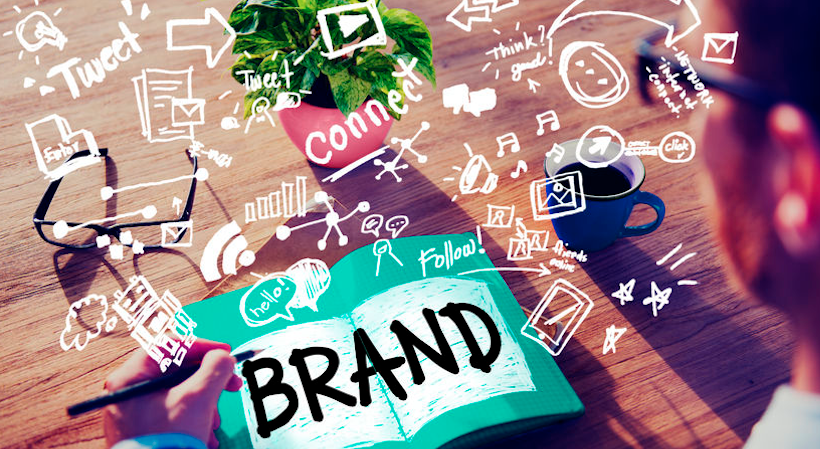Branding, or rebranding, is an exciting endeavor. It means that you get to revamp the look and feel of your entire company – which is a big job and one that can be quite frustrating if you aren’t working in the right direction or using the right person for the job.
A graphic designer that specializes in branding is an important piece of the branding puzzle, as they are aware of your company’s needs and can execute the project efficiently to get it done right the first time. Your logo and brand are used everywhere in your marketing, so it’s not something you will want to redo again and again. Trust and knowledge are powerful tools when working with a brand expert and coming up with your new logo and look.
So, how do you make sure you are doing things the best way possible? Here are six important things you will want to remember as you move forward.
1. Your logo is for your clients/customers and not you
Do you think Jeff Bezos, the founder of Amazon, worried about whether or not he liked the new Amazon logo? He was likely much more concerned with how customers connected with it. It is important to remember that the point of a logo or brand is that people recognize it.
Over time, your logo represents your company and all you stand for. Now, it’s great if it has your favorite color or font in it, but that should not the main priority. Like all aspects of your business, keep your focus on your target demographic.
Related: Achieving Personal Branding Success Starts with Authenticity
2. Less is more… seriously
This phrase has probably lost its meaning with how often we use it, but it’s such an important phrase to continue to remember. The truth is that keeping it simple is still very important, especially when it comes to a logo. That’s not to say that a logo can’t be more complex, but this is almost always an exception to the rule. If you are going for a more detailed or complex design, here are some questions to ask:
- Does the logo look better with or without a particular element?
- Are there redundancies? If the word “phone” is in the logo you don’t really need to have imagery of a phone
- How many themes or different types of imagery are there? It’s best to say fewer things but more clearly. Take one theme and let it stand front and center. In Amazon’s case, the smile – that’s the only imagery in the logo and why the smile stands out.
Also, a simpler logo allows for more flexibility when designing other pieces such as business cards and a website.
3. Don’t design a logo for a specific piece
It’s tempting to design a logo that will work well on your existing website (for example), however, websites change and adapt every few years (or at least they should) and your logo should have at least 10 years of life to it. You want to ensure your logo is something that can grow with time, as your customers will begin to know and trust your logo.
Each different product (website, business card, poster etc.) is a design project in itself and a good designer will be able to take a well-designed logo and create a good flyer or eye-catching billboard.
4. Think small to hit big
Your logo is almost always going to be viewed at the size of a business card. Even on a huge display, the distance will make it feel the equivalent size. When viewing logo concepts and different iterations, its good practice to always view your logo in business card size because it’s to scale for what most people will normally see.
It’s great to also view the logo on a high-resolution display, like a smartphone, since it is closer to the resolution of when it will be printed. Interestingly enough, viewing it in a different environment can help to maintain perspective throughout the process.
Related: StartupNation Graphic Design and Logo Design Services
5. Graphic designers: friends or enemies?
A graphic designer can design almost anything you want them to. If you want a rainbow with a squirrel holding a pink acorn in your logo, no problem, they can deliver. However, something that graphic designers offer that’s just as important is the expertise to know what you need in a logo. They have the experience and skills to know what works and what doesn’t. Think of it this way: the primary service you are paying for is knowledge, along with the ability to execute the design.
6. The dangers of opinions
At some point along the way, your designer sends you the logo concepts and now you have to choose. Easier said than done, but what makes it even more difficult is asking the wrong people what their opinions are. And there are lots of wrong people to ask!
Ideally, you will want to limit asking too many people and those who may not understand your industry or brand. Asking your uncle who is an “artistic guy” might seem like a great idea, but often it can create confusion since he might not represent the target demographic.
Try to limit asking for opinions to very few people, as too many minds can pull you in many different directions, making the decision much more difficult. The same goes for having too many stakeholders. The more decision makers there are, the more directions a logo is going to be pulled in creatively, which takes away from a unified vision. Lastly, remember to ask your graphic designer which they think would make the best brand, as an experienced designer will have plenty of experience with this.





